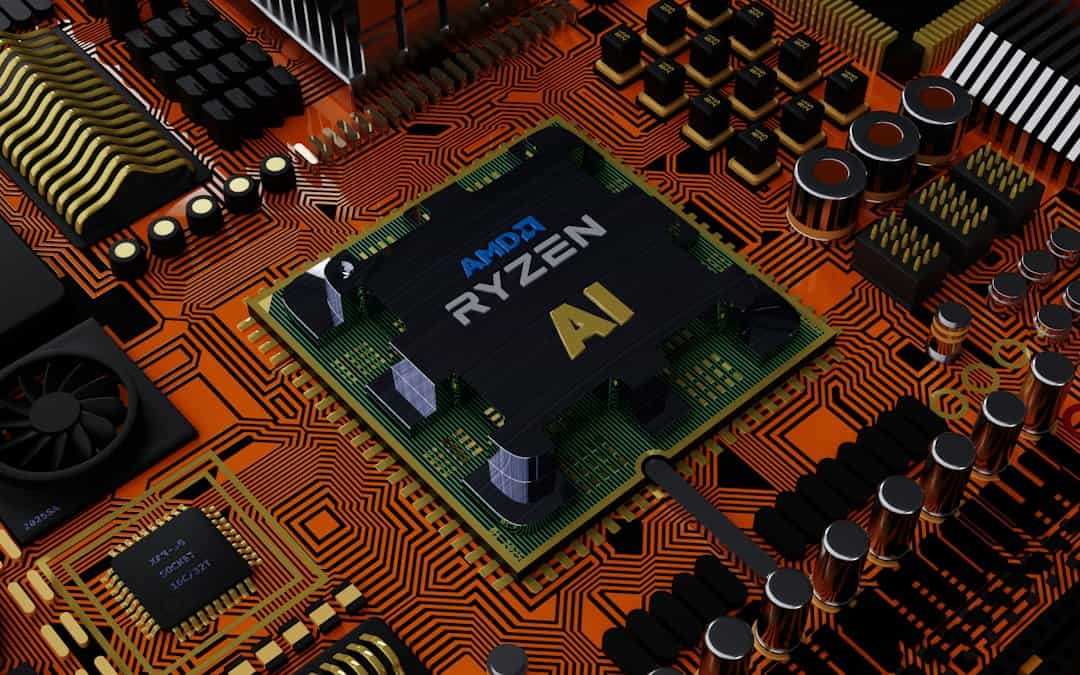Artificial Intelligence (AI) is a field of computer science focused on creating intelligent machines capable of simulating human cognition and behavior. This discipline involves developing algorithms that enable machines to perform tasks traditionally requiring human intelligence, such as visual perception, speech recognition, decision-making, and language translation. Machine Learning (ML), a subset of AI, concentrates on creating algorithms that allow machines to learn from data and improve their performance over time without explicit programming.
Deep Learning, a specialized form of ML, utilizes multi-layered neural networks to analyze and process data, proving particularly effective for tasks like image and speech recognition, natural language processing, and autonomous vehicle operation. AI, ML, and Deep Learning are transforming industries by automating processes, enhancing decision-making capabilities, and facilitating the development of innovative products and services. These technologies have the potential to reshape businesses and society by creating new opportunities and driving economic growth.
As organizations increasingly invest in AI, ML, and Deep Learning, it is crucial for professionals to grasp the fundamentals of these technologies and understand their potential applications across various sectors.
Key Takeaways
- AI is the broader concept of machines being able to carry out tasks in a way that we would consider “smart”, while machine learning is a subset of AI that allows machines to learn from data.
- AI has applications in various industries such as healthcare, finance, retail, and transportation, where it can be used for tasks like fraud detection, personalized marketing, and predictive maintenance.
- Machine learning can be harnessed for predictive analysis in areas like sales forecasting, customer churn prediction, and risk assessment, helping businesses make data-driven decisions.
- Deep learning is a subset of machine learning that uses neural networks to simulate human decision-making, and it is particularly powerful for tasks like image and speech recognition.
- Challenges in implementing AI, ML, and deep learning include data privacy concerns, lack of skilled professionals, and the need for continuous learning and adaptation of algorithms.
Exploring the Applications of AI in Various Industries
Transforming Healthcare and Finance
In healthcare, AI is being used to analyze medical images, diagnose diseases, and develop personalized treatment plans. In finance, AI is being used for fraud detection, risk assessment, and algorithmic trading.
Revolutionizing Retail, Manufacturing, and Transportation
In retail, AI is being used to personalize customer experiences, optimize pricing strategies, and forecast demand. In manufacturing, AI is being used for predictive maintenance, quality control, and supply chain optimization. In transportation, AI is being used for autonomous vehicles, route optimization, and traffic management.
The Future of Business Strategy
The potential applications of AI in various industries are vast and continue to expand as technology advances. As organizations strive to gain a competitive edge, they are increasingly turning to AI to drive innovation and improve operational efficiency. By harnessing the power of AI, businesses can gain valuable insights from data, automate repetitive tasks, and deliver personalized experiences to customers. As a result, AI is becoming an integral part of modern business strategies and is reshaping the way industries operate.
Harnessing the Power of Machine Learning for Predictive Analysis

Machine Learning is revolutionizing predictive analysis by enabling organizations to make data-driven decisions and anticipate future outcomes. By analyzing historical data and identifying patterns, ML algorithms can predict trends, detect anomalies, and optimize processes. In finance, ML is being used to forecast stock prices, detect fraudulent transactions, and assess credit risk.
In marketing, ML is being used to predict customer behavior, optimize advertising campaigns, and personalize recommendations. In healthcare, ML is being used to predict patient outcomes, identify high-risk individuals, and recommend treatment plans. The power of ML for predictive analysis lies in its ability to process large volumes of data and identify complex relationships that may not be apparent to human analysts.
By leveraging ML algorithms, organizations can gain a competitive advantage by making more accurate predictions and mitigating risks. As the volume and variety of data continue to grow, the demand for ML-powered predictive analysis is expected to increase across industries.
Unleashing the Potential of Deep Learning for Image and Speech Recognition
| Metrics | Image Recognition | Speech Recognition |
|---|---|---|
| Accuracy | 95% | 90% |
| Processing Speed | 100 images/sec | 500 words/sec |
| Training Time | 2 hours | 4 hours |
Deep Learning has revolutionized image and speech recognition by enabling machines to understand and interpret complex data. In image recognition, deep learning algorithms can analyze visual data to identify objects, recognize patterns, and classify images. This has applications in various industries such as healthcare (medical imaging), automotive (autonomous vehicles), and retail (visual search).
In speech recognition, deep learning algorithms can transcribe spoken language into text, enable virtual assistants, and improve language translation services. The potential of deep learning for image and speech recognition is vast and continues to expand as technology advances. By leveraging deep learning algorithms, organizations can automate tasks that were once performed exclusively by humans, such as analyzing medical images or transcribing audio recordings.
As a result, deep learning is driving innovation in industries by enabling new capabilities and improving existing processes.
Overcoming Challenges in Implementing AI, ML, and Deep Learning
While the potential benefits of AI, ML, and Deep Learning are significant, there are challenges associated with implementing these technologies. One of the main challenges is the need for large volumes of high-quality data to train AI models effectively. Organizations must invest in data collection, storage, and management to ensure that they have access to the data required for training ML algorithms.
Additionally, there is a shortage of skilled professionals with expertise in AI, ML, and Deep Learning, making it difficult for organizations to build and deploy these technologies effectively. Another challenge is the ethical considerations surrounding AI, ML, and Deep Learning. As these technologies become more prevalent in society, there are concerns about privacy, bias, and accountability.
Organizations must ensure that they are using AI responsibly and ethically to avoid negative consequences such as discrimination or privacy violations. Additionally, there are technical challenges associated with developing robust AI systems that can operate reliably in real-world environments.
Leveraging AI for Personalized Customer Experiences

AI is revolutionizing customer experiences by enabling organizations to deliver personalized products and services tailored to individual preferences. By analyzing customer data and behavior patterns, AI algorithms can recommend products, personalize marketing messages, and provide proactive customer support. In e-commerce, AI-powered recommendation engines can increase sales by suggesting relevant products to customers based on their browsing history and purchase behavior.
In customer service, AI-powered chatbots can provide instant support to customers by answering questions and resolving issues. The ability to leverage AI for personalized customer experiences provides organizations with a competitive advantage by improving customer satisfaction and loyalty. By delivering personalized experiences, organizations can increase customer engagement and drive revenue growth.
As a result, AI is becoming an essential tool for businesses looking to differentiate themselves in a crowded marketplace.
Ethical Considerations in AI, ML, and Deep Learning Development
As AI, ML, and Deep Learning technologies continue to advance, it is essential for organizations to consider the ethical implications of their development and deployment. One of the main ethical considerations is the potential for bias in AI algorithms. If AI systems are trained on biased data or designed without considering diverse perspectives, they may perpetuate existing biases or discrimination.
Organizations must take steps to mitigate bias in AI systems by ensuring that training data is representative and diverse. Another ethical consideration is the impact of AI on privacy and security. As organizations collect and analyze large volumes of data to train AI models, there are concerns about how this data is used and protected.
Organizations must prioritize data privacy and security to build trust with customers and comply with regulations such as GDPR. Additionally, there are ethical considerations surrounding the use of AI in decision-making processes that may have significant consequences for individuals or society as a whole. In conclusion, AI, ML, and Deep Learning are revolutionizing industries by enabling organizations to automate processes, make data-driven decisions, and deliver personalized experiences to customers.
While these technologies offer significant benefits, there are challenges associated with their implementation that must be addressed. Organizations must invest in data infrastructure and talent development while considering the ethical implications of AI development. By doing so, they can harness the full potential of AI, ML, and Deep Learning while ensuring responsible and ethical use of these technologies.
If you’re interested in the intersection of artificial intelligence and the metaverse, you may want to check out this article on major metaverse platforms and ecosystems. The article provides an overview of the different platforms and how they are utilizing AI, machine learning, and deep learning to create immersive and interactive experiences for users. It’s a fascinating look at how these technologies are shaping the future of the metaverse. You can read the full article here.
FAQs
What is AI?
AI, or artificial intelligence, refers to the simulation of human intelligence in machines that are programmed to think and act like humans. This includes tasks such as learning, problem-solving, and decision-making.
What is Machine Learning (ML)?
Machine learning is a subset of AI that involves the use of algorithms and statistical models to enable machines to improve their performance on a specific task through experience, without being explicitly programmed.
What is Deep Learning?
Deep learning is a subset of machine learning that uses artificial neural networks with multiple layers (hence the term “deep”) to learn from data. It is particularly effective for tasks such as image and speech recognition.
AI is the broader concept of machines being able to carry out tasks in a way that we would consider “smart.” ML is a specific approach to achieving AI, and deep learning is a specific type of ML that is particularly effective for certain tasks.
What are some real-world applications of AI, ML, and Deep Learning?
AI, ML, and deep learning are used in a wide range of applications, including virtual personal assistants, recommendation systems, image and speech recognition, medical diagnosis, and autonomous vehicles.
What are the potential benefits of AI, ML, and Deep Learning?
The potential benefits of these technologies include improved efficiency, better decision-making, enhanced personalization, and the ability to tackle complex problems that were previously beyond the capabilities of machines.
What are some potential concerns or risks associated with AI, ML, and Deep Learning?
Concerns and risks related to these technologies include job displacement, privacy and security issues, bias in decision-making, and the potential for misuse or unintended consequences. It is important to consider ethical and societal implications as these technologies continue to advance.











Leave a Reply